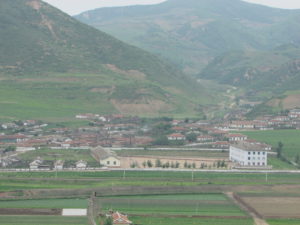Institute for Far Eastern studies (IFES)
North Korea is pushing the development of the IT industry. The “2016 National IT Achievements Exhibit” demonstrates the current state of affairs in the industry.
On October 5th, the official organ of the Workers Party of Korea (WPK), Rodong Sinmun, reported in detail of this exhibit. It said, “The exhibit was held under the theme of ‘self-strength-first, collective competition, and global competitiveness’.” In addition, it also reported, “The goal of the exhibit is to introduce and promote the accomplishments of the IT industry and push forward with modernization of IT technology in our own style and hold steadfast to every unit and part of science and technology as our lifeline.”
According to the news, the exhibit displayed 1,000 technical products from 260 units. There were new product presentations, discussions on the usage of products, security industry competition, and cutting-edge product exchange service, which was divided into four areas that included the IT enterprise and information security.
Units with exemplary IT—top ten IT companies, and top ten IT products—were selected based on the technical achievements and economic effectiveness.
At the opening ceremony, the Vice-Chairman of the WPK Central Committee Kim Ki Nam said, “The Party line on the science and technology is fully realized and we seized the global fortresses of cutting-edge technological sectors including IT. Now, many factories and work places of the people’s economy, enterprises have transformed to become a standard of the knowledge economy era.”
He also said, “This exhibit is an important step towards the development of globally competitive IT technology and raised the overall standard of the IT industry.” He also encouraged, “the participants to fully accept the achievements and experiences of leading units.”
Such emphasis on the development of IT can be associated with the recent reports from the Party Central Committee at the 7th Party Congress back in May, and the decision adopted by the Party Congress. According to these documents, a strong science-technology state means “a country that has reached the cutting-edge global standards in science and technology and a country where all sectors including the economy, national defense, and culture rapidly advance through the leading role played by science and technology.”
In North Korean terms, a state strong in science and technology not only encompasses IT, nanotechnology, biotech, and nuclear technologies, but also reaches global research standards in fields including machine engineering, metallurgical engineering, thermal engineering, and material engineering, (i.e., major fields of engineering), as well as the basic sciences like mathematics, physics, chemistry and biology. Furthermore, the aim is to produce and launch more working satellites in order to contribute to the construction of a ‘major space power’ with space science and technology capabilities.
In addition, a state strong in science and technology has placed science and technology as the main locomotive behind economic development to resolve essential problems of energy, steel, chemical products and food. Science and technology also plays the leading role in modernizing the economy and IT.
This means through the advancement of science and technology, it is attempting to resolve energy issues through the development of nuclear power and environmentally friendly energy. It also involves the development of technologies like Juche steel production technology (the production of steel that minimizes the use of imported fuel) in order to localize raw material and equipment production that is currently import-dependent as well as achieve modernization of light industry and agricultural production through scientific and industrial methods.

